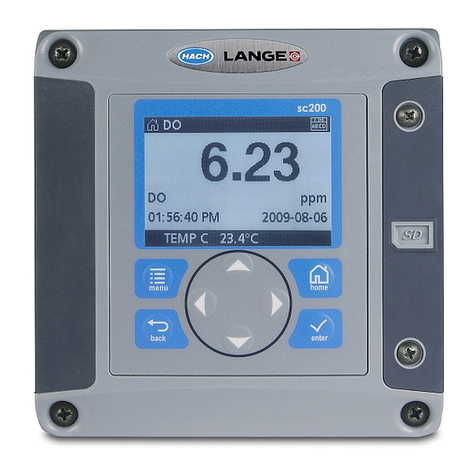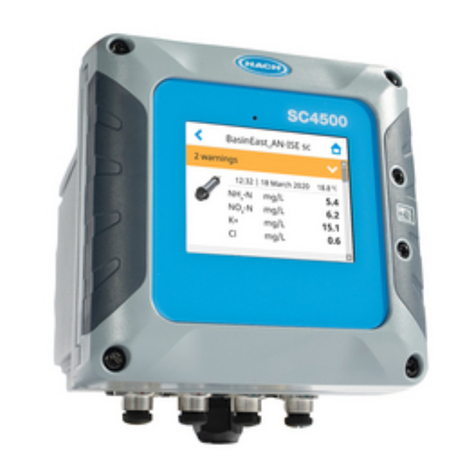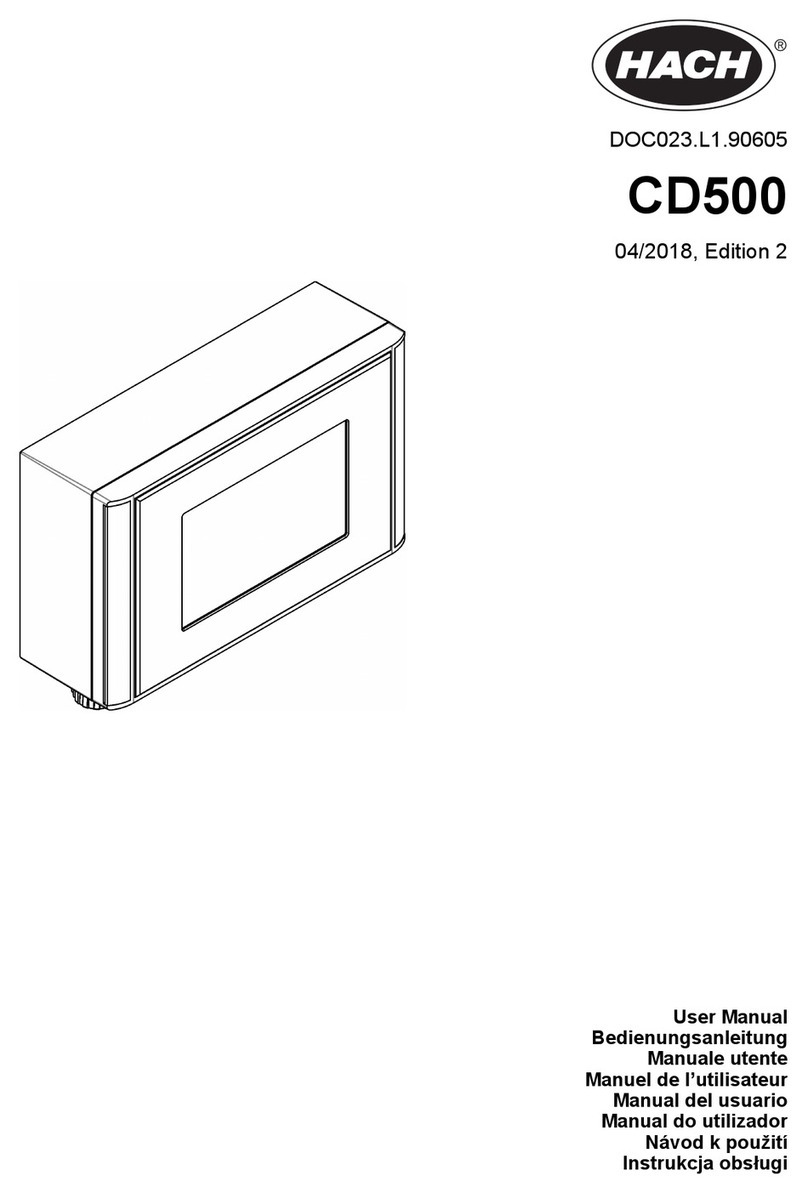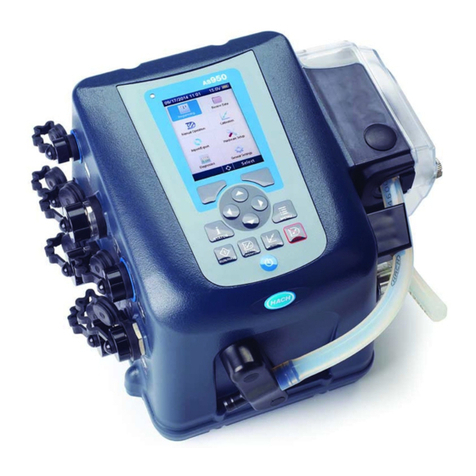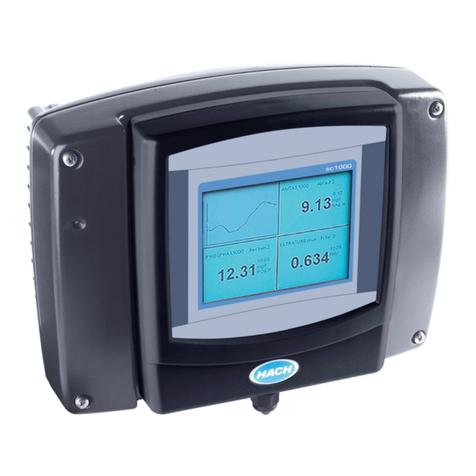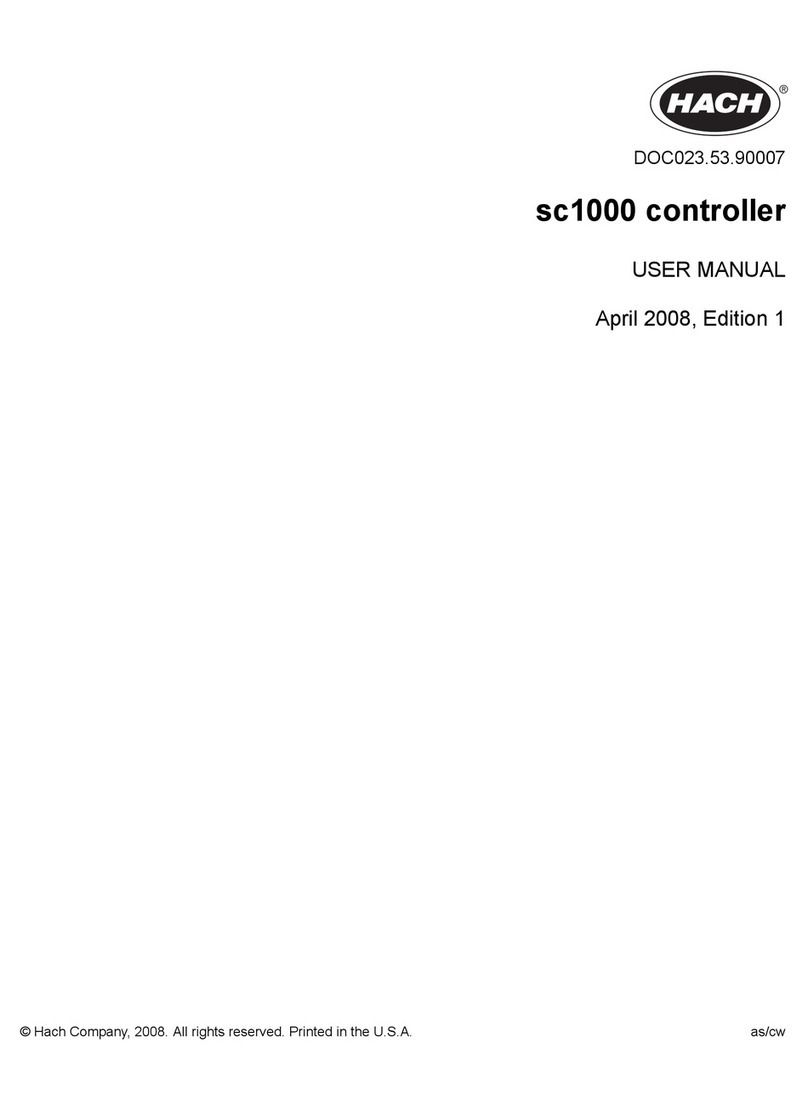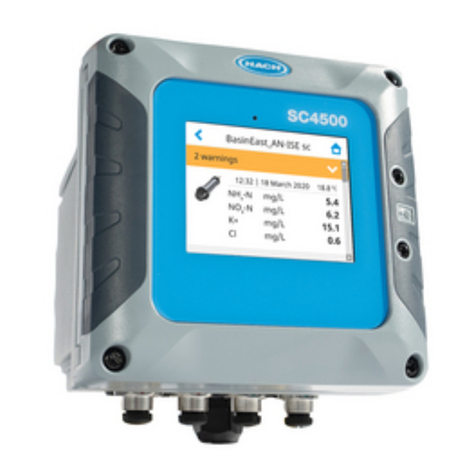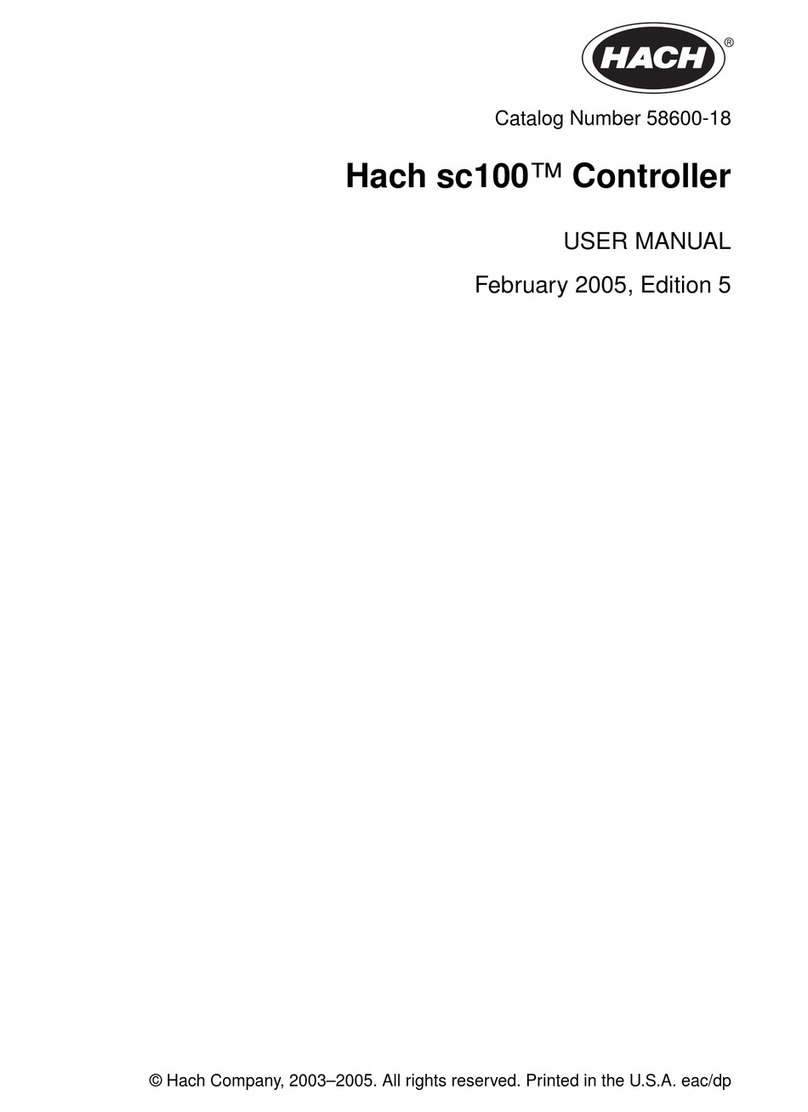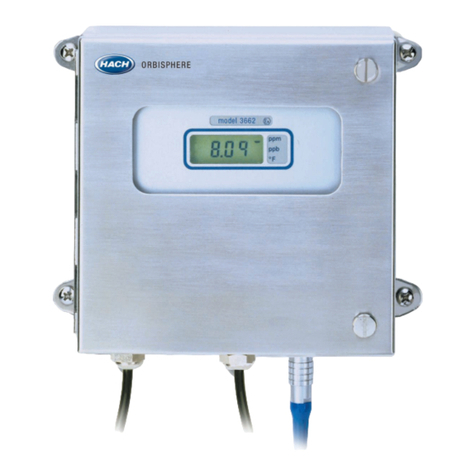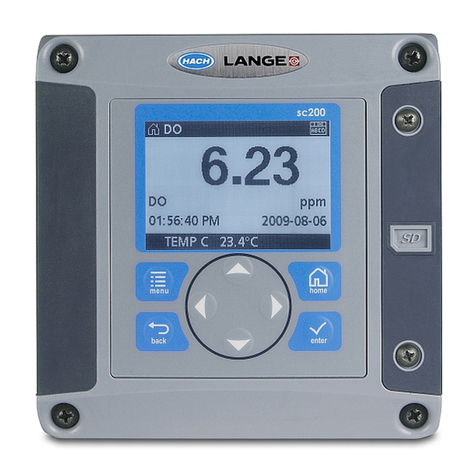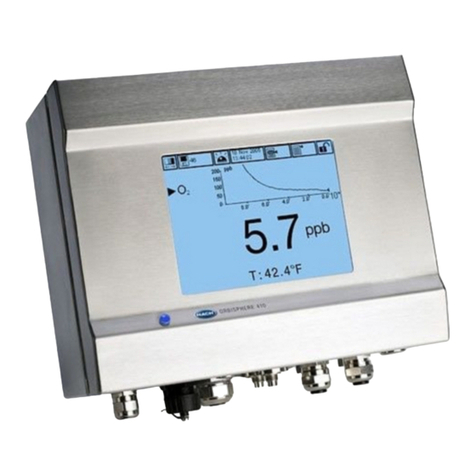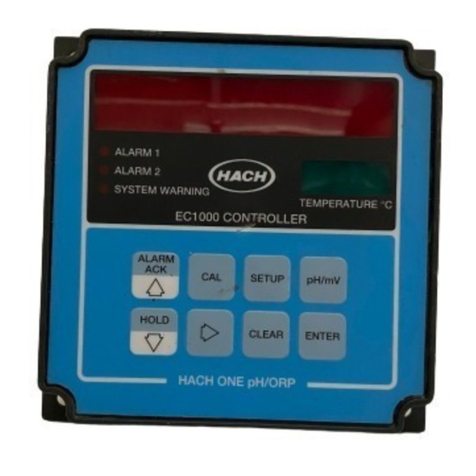
Specification Details
Analog outputs (optional)3Five 0–20 mA (or 4-20 mA) analog outputs on each analog output module1
Digital communication
(optional)3Profibus DPV1 module, Modbus TCP, PROFINET module, EtherNet/IP™2 module
RTC module (optional) Contact sales or technical support for information.
Note: Only one RTC module can be installed on a controller at the same time.
Network connection3LAN version (optional): Two Ethernet connectors (10/100 Mbps), M12 female D-
coding connector; Cellular version and WiFi version (optional)4
USB port Used for data download and software upload. The controller records
approximately 20,000 data points for each connected sensor.
Compliance information CE. ETL certified to UL and CSA safety standards (with all sensor types), FCC,
ISED, KC, RCM, EAC, UKCA, SABS, CMIM, Morocco
Warranty 1 year (EU: 2 years)
Section 2 Online user manual
This Basic User Manual contains less information than the User Manual, which is available on the
manufacturer's website.
Section 3 General information
In no event will the manufacturer be liable for damages resulting from any improper use of product or
failure to comply with the instructions in the manual. The manufacturer reserves the right to make
changes in this manual and the products it describes at any time, without notice or obligation.
Revised editions are found on the manufacturer’s website.
3.1 Safety information
The manufacturer is not responsible for any damages due to misapplication or misuse of this product
including, without limitation, direct, incidental and consequential damages, and disclaims such
damages to the full extent permitted under applicable law. The user is soley responsible to identify
critical application risks and install appropriate mechanisms to protect processes during a possible
equipment malfunction.
Please read this entire manual before unpacking, setting up or operating this equipment. Pay
attention to all danger and caution statements. Failure to do so could result in serious injury to the
operator or damage to the equipment.
Make sure that the protection provided by this equipment is not impaired. Do not use or install this
equipment in any manner other than that specified in this manual.
3.1.1 Use of hazard information
D A N G E R
Indicates a potentially or imminently hazardous situation which, if not avoided, will result in death or serious injury.
WARNING
Indicates a potentially or imminently hazardous situation which, if not avoided, could result in death or serious
injury.
1Refer to the module documentation for additional information.
Note: Install only one module in one of the available slots.
2EtherNet/IP is a trademark of OVDA Inc.
3Dependent on controller configuration.
4An external USB box WiFi is necessary for network connection on WiFi versions. An external
USB box cellular is necessary for network connection on cellular versions.
4 English






